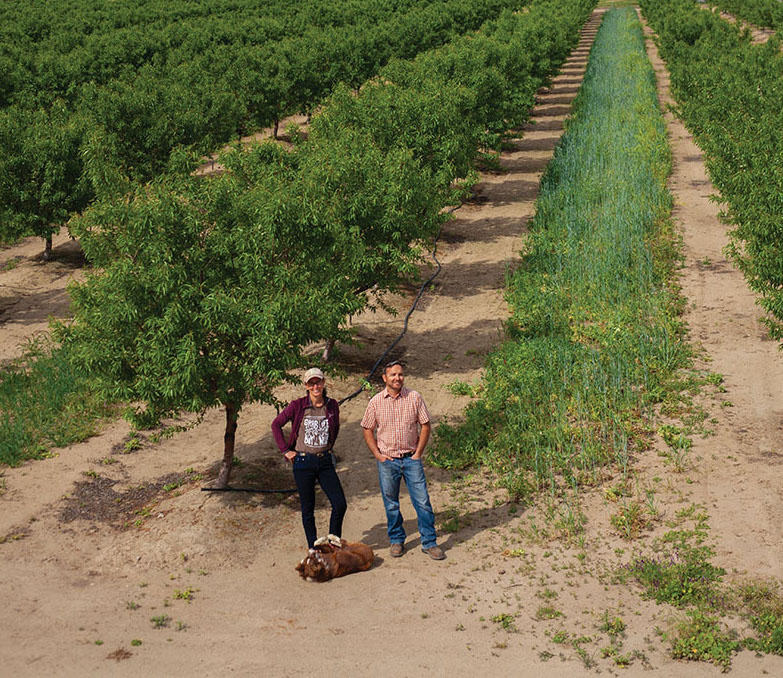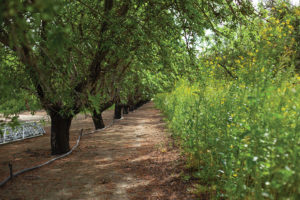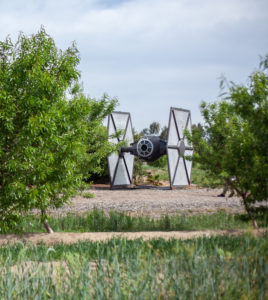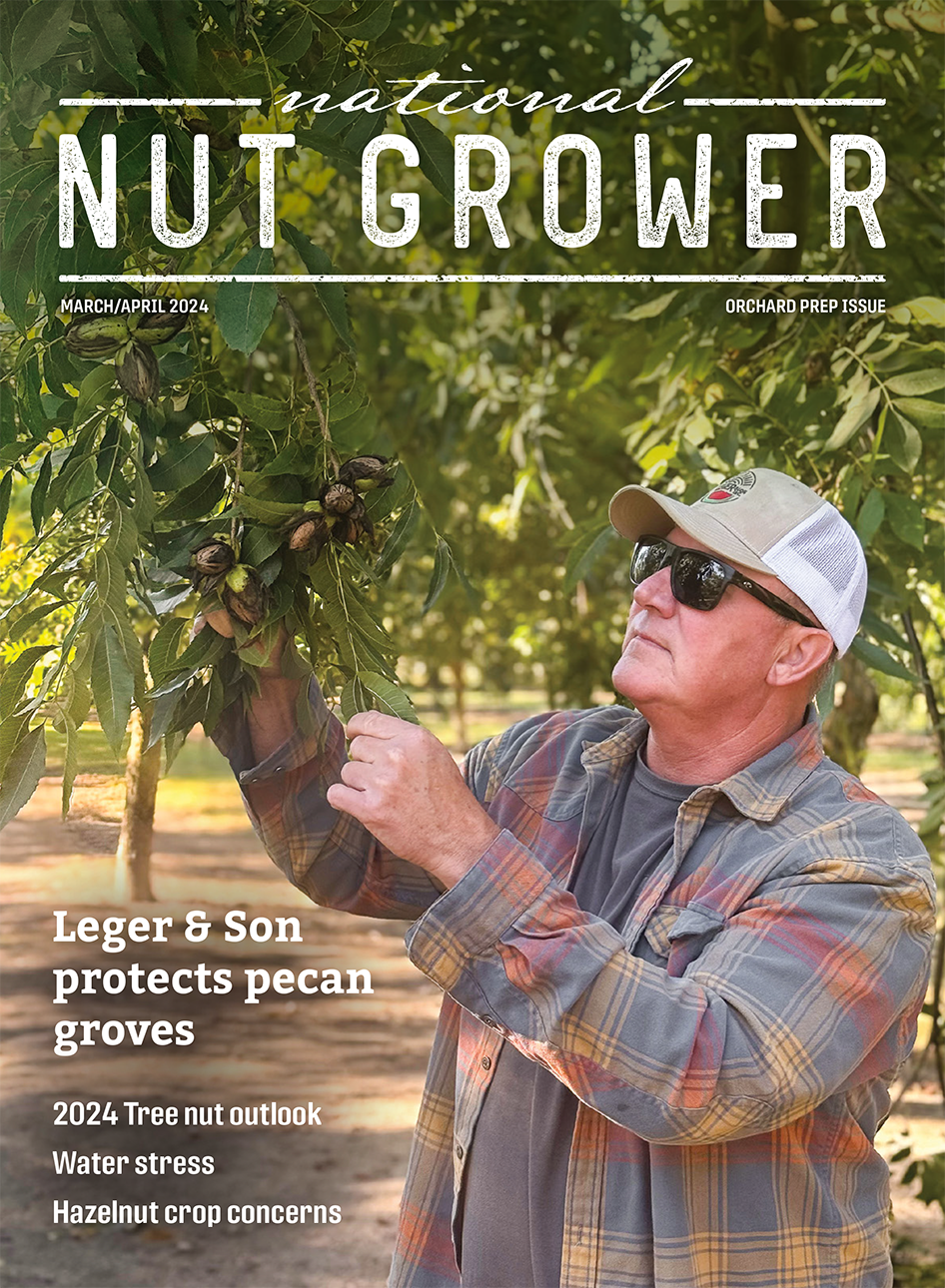
May/June 2022
Gemperle Orchards
Sometimes, integrated pest management (IPM) practices happen gradually. There are no hard and fast rules – or decisions – for implementing IPM practices. But one change can have a domino effect.
This was the case for Christine and Erich Gemperle, a sibling duo managing 135 acres of almonds over two parcels. A couple years ago, as she was mowing the cover crop, Christine saw many beneficial insects take to the sky (and into her face). It was about the time she would put on an abamectin spray in spring that would protect the trees from mites, but she didn’t want to spray and possibly damage all these beneficial insects.
The orchard hadn’t had a mite problem in roughly a decade, and now continuing the routine was up for debate. Yet there was still the possibility of infestation without the spray.
“Some things are preventative. But, sometimes, you just don’t know if you’re preventing it, or it was never going to show up in the first place,” she said.
That year she and her brother made the decision and did not spray for mites, and then waited it out to see what would happen. If mites did show up, the Gemperles would treat with an OMITE spray and go back to preventative spraying.
There was no mite problem, and the older trees haven’t been sprayed for mites since.
Christine does, however, provide what she calls a bit of a buffer spray on the younger trees that are more exposed.

A ground cover ally
One of the biggest problems for controlling mites is whether a grower is providing a good habitat for the pest. Trees that are exposed to a lot of dust tend to invite mites, which is why trees on orchard perimeters and along roads tend to be more susceptible. That same cover crop that inspired foregoing the spray not only helped increase beneficials, but also kept down the dust. Aside from creating a mulch-like layer after mowing, timing orchard activity with a recent irrigation can prevent dust – the soil is just damp enough that dust isn’t kicked up, but just dry enough to prevent soil compaction.
That layer also helps keep down a lot of the weeds. In the spring, when summer weeds are starting to establish, the Gemperles have found that the weed growth is slowed, including – if not especially – the herbicide-resistant varieties, such as mare’s tail, fleabane and nutsedge, which is the least problematic at harvest.
Navel orangeworm, however, is different. Gemperle Orchards is very diligent about winter sanitation, shaking trees in the winter and blowing the mummies into the cover crop, or sweeping them into the middles and mowing them in.
“I’ll actually till them in as I’m planting a second planting of cover crops,” said Christine. “That keeps our navel orangeworm population down, at least within our orchard.”
There is still one navel orangeworm spray done at hull split. There was a temporary application of a second spray, but seeing that it made little difference, it was scrapped and remains at one spray.
“As far as an insecticide, that’s all we do for the year, that one spray,” she said.
Every year is different, and while that could change, so far it has been good. The same is true for fungicide applications – they’re applied only when they absolutely need to be. This year, because it didn’t rain at all during bloom, the tractor never even left the barn.

Trial, error and finding what works
Christine Gemperle is a member of the Biomass Working Group, one of many subcommittees under the Almond Board of California, and represents Blue Diamond Growers. The Gemperles have recycled two orchards, the wood chips from which were spread throughout the field and around the property.
“It really makes a difference having the chips down,” said Erich. “It doesn’t make any dust at all.”
It’s been a path of trial and error, grants and field trials. But the system they have in place seems to be working and effective.
“It took about 10 years to figure this out – the process and the method, and where it fits into our farming schedule,” said Christine. “We do a lot of regenerative practices, but we are conventional. So we’re trying to find that balance between finding the tools that are there and what – and how much – we can cut back on.”
A lot of credit is given to the cover crops and a few changes in practices, which have had the benefit of pesticide and herbicide use reduction. Larger mow strips means less herbicide. Less pesticide use means lacewings, ladybugs and six-spotted thrips have all been found in the cover and in the trees.

“There’s only two of us doing the work here, so we have to make things as streamlined and easy for two people to get done,” said Christine. “For Erich and me, it’s all about quality of life.”
Christine and Erich Gemperle in third-leaf almonds with a cover crop. Photo: Matt Hannon







